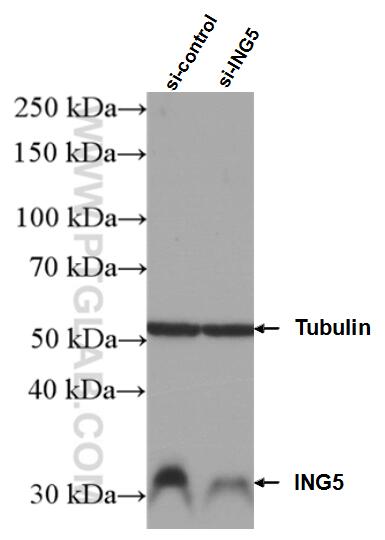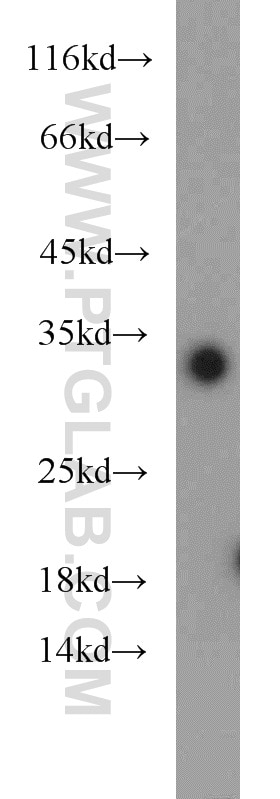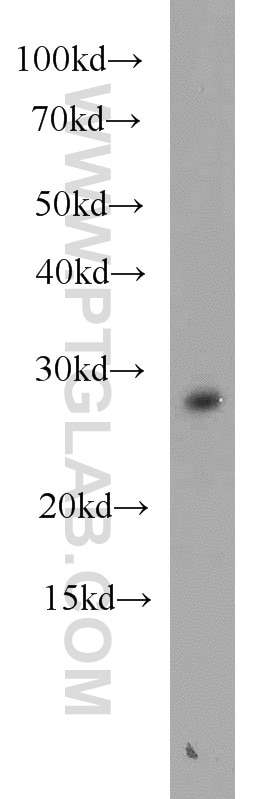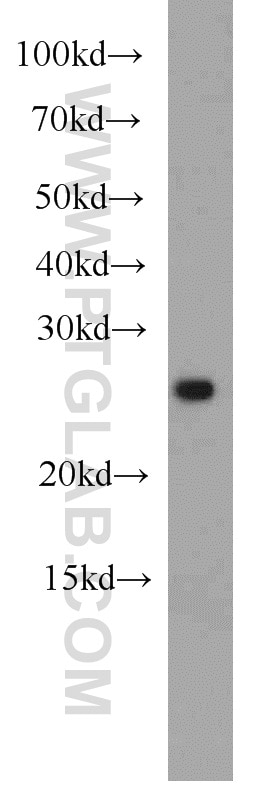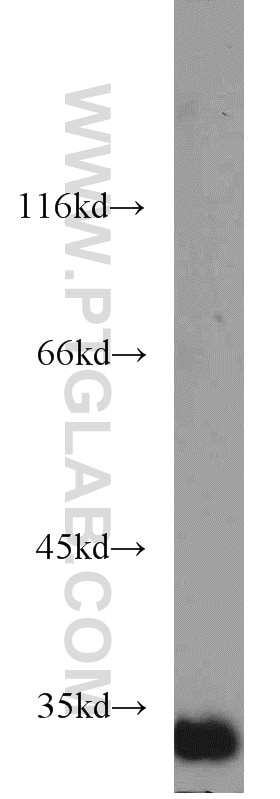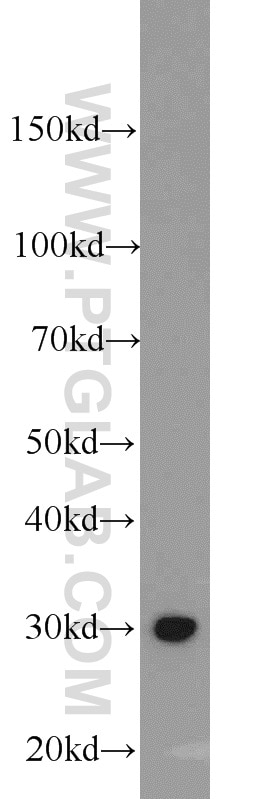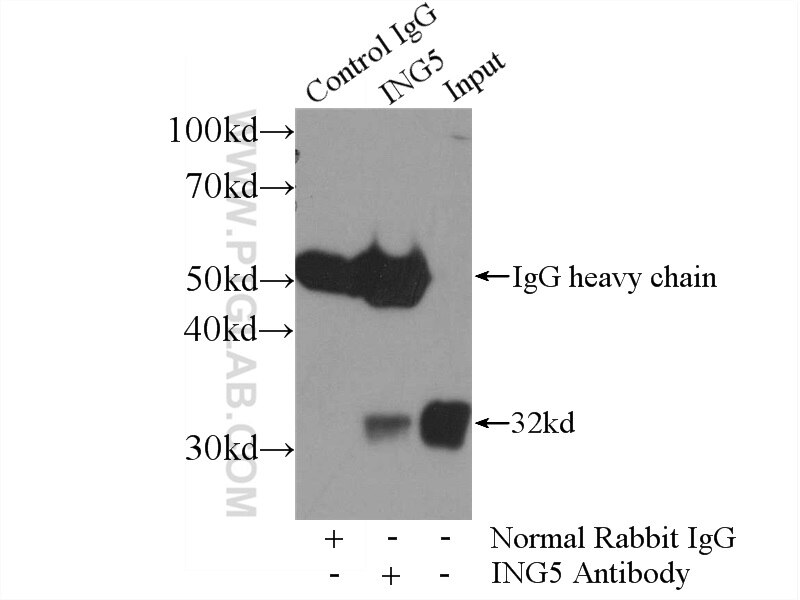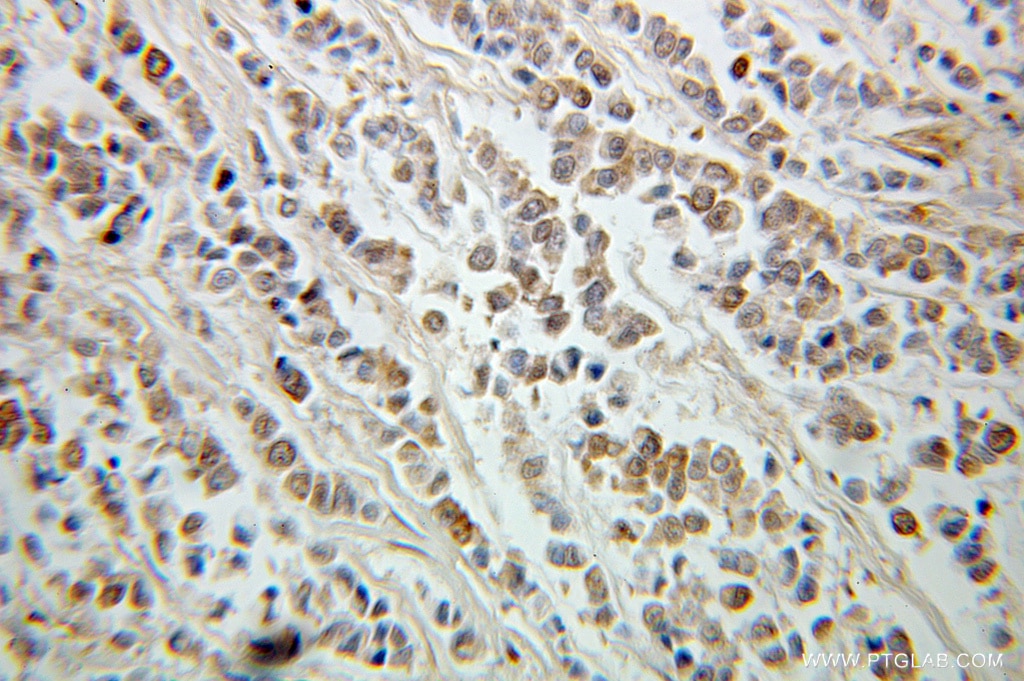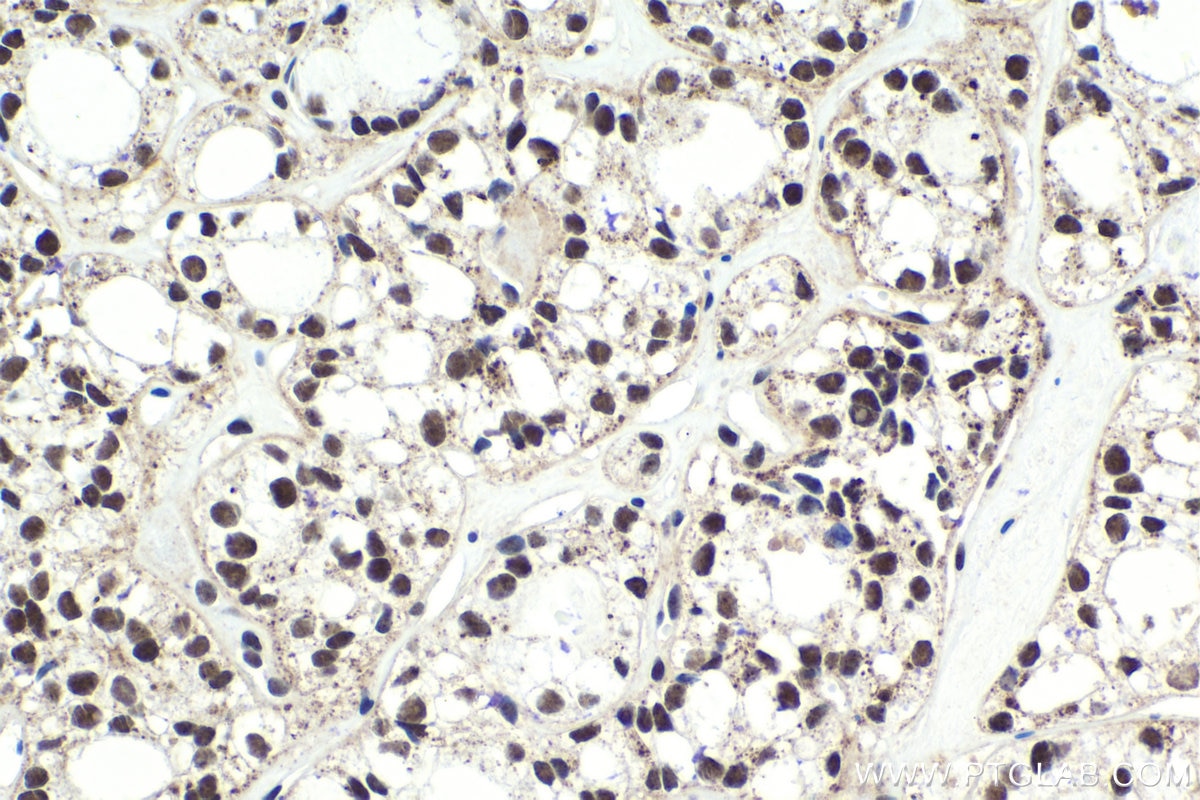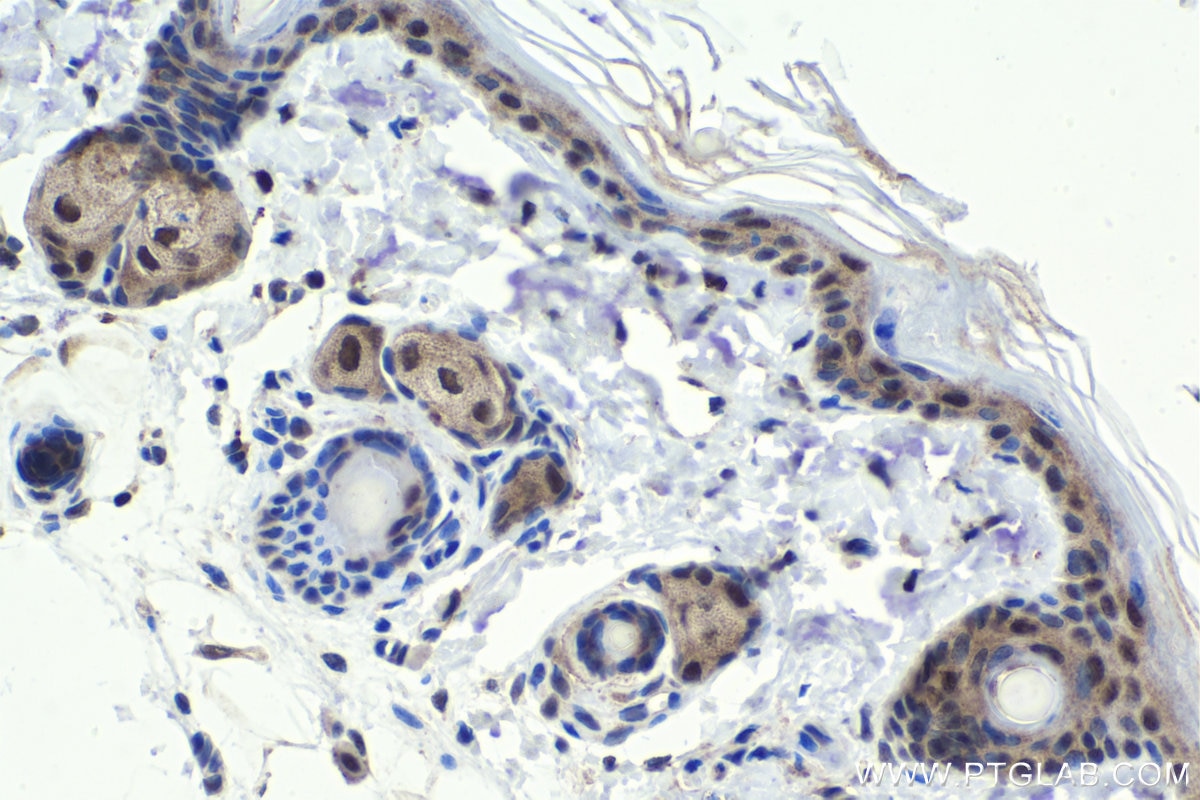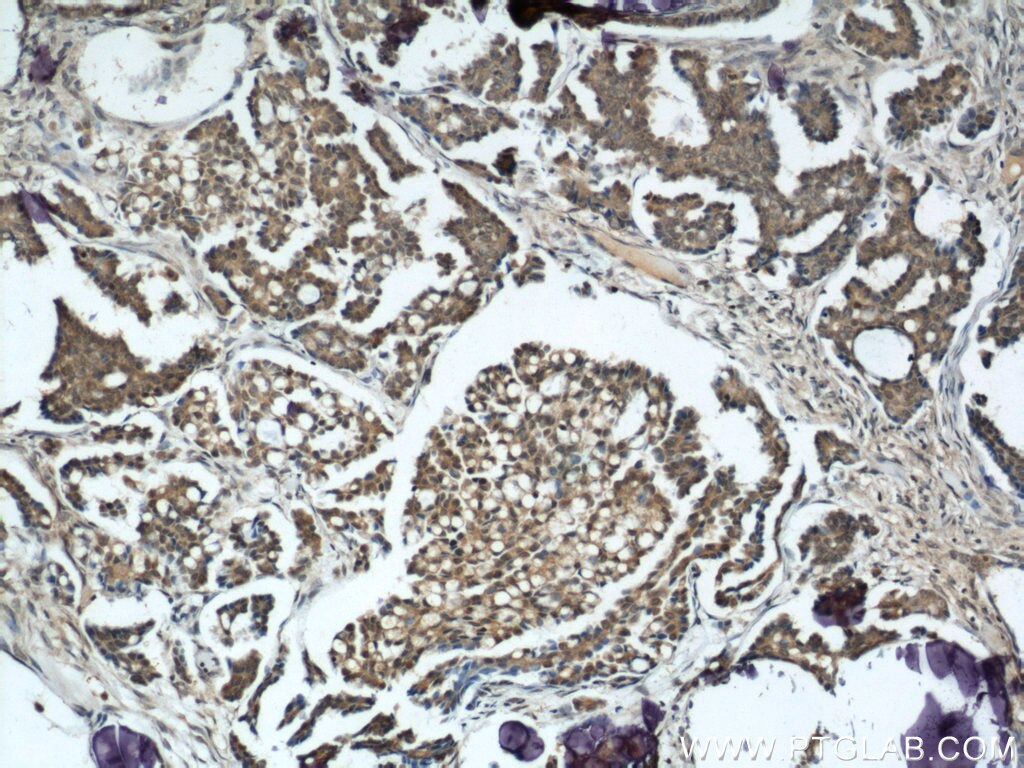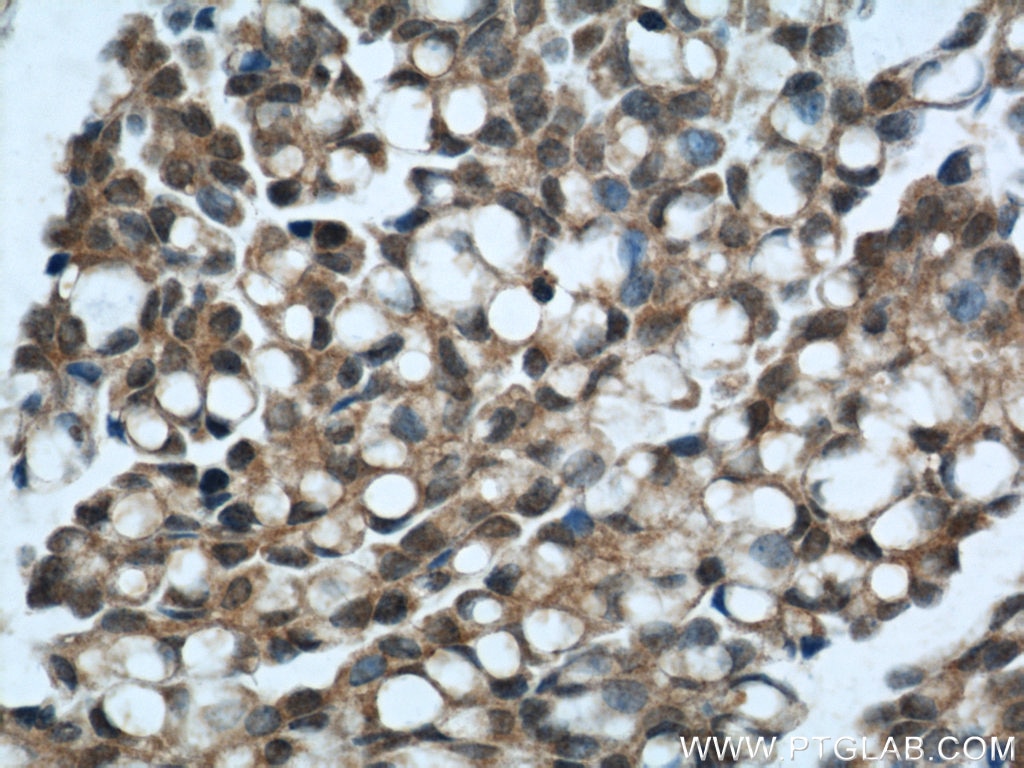Validation Data Gallery
Tested Applications
| Positive WB detected in | Jurkat cells, PC-3 cells, mouse kidney tissue, HEK-293 cells |
| Positive IP detected in | HEK-293 cells |
| Positive IHC detected in | human colon cancer tissue, human ovary tumor tissue, human thyroid cancer tissue, mouse kidney tissue, rat skin tissue Note: suggested antigen retrieval with TE buffer pH 9.0; (*) Alternatively, antigen retrieval may be performed with citrate buffer pH 6.0 |
Recommended dilution
| Application | Dilution |
|---|---|
| Western Blot (WB) | WB : 1:500-1:1000 |
| Immunoprecipitation (IP) | IP : 0.5-4.0 ug for 1.0-3.0 mg of total protein lysate |
| Immunohistochemistry (IHC) | IHC : 1:20-1:200 |
| It is recommended that this reagent should be titrated in each testing system to obtain optimal results. | |
| Sample-dependent, Check data in validation data gallery. | |
Published Applications
| KD/KO | See 5 publications below |
| WB | See 22 publications below |
| IHC | See 10 publications below |
| IF | See 5 publications below |
Product Information
10665-1-AP targets ING5 in WB, IHC, IF, IP, ELISA applications and shows reactivity with human, mouse, rat samples.
| Tested Reactivity | human, mouse, rat |
| Cited Reactivity | human, mouse, rat |
| Host / Isotype | Rabbit / IgG |
| Class | Polyclonal |
| Type | Antibody |
| Immunogen |
CatNo: Ag1059 Product name: Recombinant human ING5 protein Source: e coli.-derived, PGEX-4T Tag: GST Domain: 1-226 aa of BC005370 Sequence: MATAMYLEHYLDSIENLPCELQRNFQLMRELDQRTEDKKAEIDILAAEYISTVKTLSPDQRVERLQKIQNAYSKCKEYSDDKVQLAMQTYEMVDKHIRRLDADLARFEADLKDKMEGSDFESSGGRGLKKGRGQKEKRGSRGRGRRTSEEDTPKKKKHKGGSEFTDTILSVHPSDVLDMPVDPNEPTYCLCHQVSYGEMIGCDNPDCPIEWFHFACVDLTTKPKGK 相同性解析による交差性が予測される生物種 |
| Full Name | inhibitor of growth family, member 5 |
| Calculated molecular weight | 28 kDa |
| Observed molecular weight | 28-32 kDa |
| GenBank accession number | BC005370 |
| Gene Symbol | ING5 |
| Gene ID (NCBI) | 84289 |
| RRID | AB_2280522 |
| Conjugate | Unconjugated |
| Form | |
| Form | Liquid |
| Purification Method | Antigen affinity purification |
| UNIPROT ID | Q8WYH8 |
| Storage Buffer | PBS with 0.02% sodium azide and 50% glycerol{{ptg:BufferTemp}}7.3 |
| Storage Conditions | Store at -20°C. Stable for one year after shipment. Aliquoting is unnecessary for -20oC storage. |
Background Information
ING5, also named as p28ING5, belongs to the ING family. It is a component of the HBO1 complex which has a histone H4-specific acetyltransferase activity, a reduced activity toward histone H3 and is responsible for the bulk of histone H4 acetylation in vivo. ING5 is a component of the MOZ/MORF complex which has a histone H3 acetyltransferase activity. Through chromatin acetylation it may regulate DNA replication and may function as a transcriptional coactivator. (PMID:12750254) Altered ING5 expression and its shift into the cytoplasm may have an impact on the malignant transformation of colorectal epithelial cells and should be considered as a biomarker for colorectal carcinogenesis. (PMID:21193223)
Protocols
| Product Specific Protocols | |
|---|---|
| IHC protocol for ING5 antibody 10665-1-AP | Download protocol |
| IP protocol for ING5 antibody 10665-1-AP | Download protocol |
| WB protocol for ING5 antibody 10665-1-AP | Download protocol |
| Standard Protocols | |
|---|---|
| Click here to view our Standard Protocols |
Publications
| Species | Application | Title |
|---|---|---|
Cell Res LRP6 downregulation promotes cardiomyocyte proliferation and heart regeneration.
| ||
Oncotarget The miR-193a-3p-regulated ING5 gene activates the DNA damage response pathway and inhibits multi-chemoresistance in bladder cancer. | ||
Oncotarget Upregulated in Hepatitis B virus-associated hepatocellular carcinoma cells, miR-331-3p promotes proliferation of hepatocellular carcinoma cells by targeting ING5.
| ||
Oncotarget ING5 inhibits cancer aggressiveness via preventing EMT and is a potential prognostic biomarker for lung cancer. | ||
Oncotarget ING5 suppresses proliferation, apoptosis, migration and invasion, and induces autophagy and differentiation of gastric cancer cells: a good marker for carcinogenesis and subsequent progression.
|

